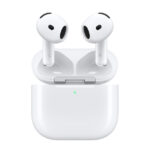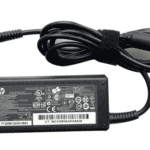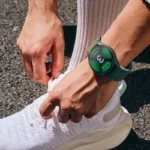Is your laptop struggling to connect to a mobile hotspot? This common problem can be frustrating when you need internet access on the go. Many laptop users face issues with hotspot connections despite their devices showing they’re connected. Troubleshooting your laptop’s connection to a hotspot usually involves checking network settings, resetting adapters, and ensuring your devices are properly configured.
Connection problems can stem from several sources. Your laptop might show it’s connected with internet access, but nothing loads in your browser. Sometimes moving your laptop closer to the hotspot device can help. Other times, you may need to restart your network adapter through Windows settings or use the network troubleshooter.
Signal strength matters too. If your mobile device has a weak cellular signal, your hotspot may not function properly. Make sure you’re connecting to the correct network and using the right password. Simple fixes like turning Wi-Fi off and back on can often resolve these connection issues.
Here are the steps to fix a laptop that won’t connect to a mobile hotspot:
How To Fix A Laptop That Won’t Connect to Hotspot
1. Restart Everything
- Restart your laptop.
- Restart your phone (or device providing the hotspot).
- Turn hotspot off and on again.
- Try reconnecting after all devices have fully rebooted.
2. Forget and Reconnect to the Hotspot
- On your laptop, go to Wi-Fi Settings.
- Click on your hotspot name and select “Forget”.
- Search for the hotspot again and reconnect by entering the password.
3. Check the Hotspot Device Settings
- Make sure the hotspot is enabled on your phone.
- Confirm data is turned on and mobile data is available.
- Ensure the hotspot password and band (2.4GHz or 5GHz) are correct and compatible with your laptop.
- On some devices, enable “Allow others to connect” or “Extended compatibility”.
4. Turn Off Airplane Mode
- On your laptop, ensure Airplane Mode is turned off.
- On Windows:
Settings > Network & Internet > Airplane mode - On macOS: Use the Control Center or Network Preferences.
5. Run Windows Network Troubleshooter (Windows Only)
- Go to
Settings > Network & Internet > Status. - Click Network Troubleshooter and follow on-screen instructions.
6. Update Wireless Drivers
- On Windows:
- Press
Win + X> Device Manager - Expand Network adapters
- Right-click your wireless adapter > Update driver
- Press
- On macOS, use System Update to check for wireless updates.
7. Toggle Wi-Fi Adapter
- In Device Manager (Windows), disable the Wi-Fi adapter and re-enable it.
- On Mac, turn Wi-Fi off and on again using the menu bar or System Preferences.
8. Switch Frequency Bands
- Some laptops don’t support 5GHz.
- Change your hotspot to 2.4GHz in your phone’s hotspot settings.
9. Temporarily Disable Security Software
- Antivirus or firewall software may block the hotspot connection.
- Disable it temporarily to test the connection (then re-enable after testing).
10. Use Manual IP Settings
- Go to your laptop’s Wi-Fi network settings.
- Manually enter:
- IP address:
192.168.43.100 - Subnet mask:
255.255.255.0 - Default gateway:
192.168.43.1 - DNS:
8.8.8.8and8.8.4.4
- IP address:
11. Check for OS Updates
- Make sure your laptop’s operating system is up to date.
- Updates often include networking fixes and driver improvements.
12. Reset Network Settings (Last Resort)
- On Windows:
Settings > Network & Internet > Status > Network Reset - On macOS:
- Go to System Settings > Network
- Remove and re-add the Wi-Fi service, or reset system configurations manually.
If it still doesn’t work, try connecting the hotspot to a different device to rule out whether the issue is with the hotspot or the laptop.
Key Takeaways
- Check that you’re connected to the correct network and reset your laptop’s Wi-Fi adapter if connection problems persist.
- Try moving your laptop closer to the hotspot device and restart both devices to establish a stronger connection.
- Verify your network settings are properly configured and that your mobile device has adequate signal strength to support a hotspot connection.
Understanding Wi-Fi Hotspots
Wi-Fi hotspots let you connect to the internet through another device. They work by creating a small wireless network that your laptop can join when regular Wi-Fi isn’t available.
Types of Hotspots
Mobile hotspots come in several forms. The most common is a personal hotspot from smartphones like iPhones, which turn your cellular data into Wi-Fi. These are handy for travel or when your home internet fails.
Dedicated hotspot devices are another option. These portable units from cellular companies offer better battery life than phone hotspots.
Public hotspots exist in cafes, libraries, and airports. These shared connections are convenient but less secure than personal options.
Many newer vehicles include built-in Wi-Fi hotspots with their own data plans.
Some home routers also feature “guest networks” that function like hotspots for visitors.
Common Hotspot Connectivity Issues
Frequency band problems often cause connection failures. Many laptops struggle with 5GHz bands, so switching your iPhone or Android hotspot to 2.4GHz can fix connectivity issues.
Signal strength affects connection quality. Keep your hotspot device close to your laptop for the best results.
Battery drain happens quickly when using an iPad or iPod Touch as a hotspot. Always keep power sources nearby during extended use.
Data limits can interrupt connections unexpectedly. Most carriers restrict hotspot data, even with unlimited plans.
Security settings sometimes block connections. Check that your password is correct and that your laptop hasn’t blocked the hotspot’s network.
Outdated drivers on your laptop can prevent successful connections. Regularly update your network drivers to ensure compatibility.
Preliminary Checks
Before diving into complex solutions, let’s make sure we’ve covered the basics when your laptop won’t connect to a hotspot. These simple checks often solve the problem without needing technical knowledge.
Ensuring Hotspot Functionality
First, verify that your mobile hotspot is working properly. Turn the hotspot on and check if other devices can connect to it. If another phone or tablet connects successfully, the issue likely lies with your laptop.
Try restarting your hotspot by turning it off for about 30 seconds and then turning it back on. Sometimes the connection gets stuck and needs a fresh start.
Check your hotspot’s settings to make sure you haven’t reached your data limit. Some carriers automatically disable hotspot functionality when you’ve used your allocated data.
Make sure you’re using the correct password. It seems obvious, but many connection problems happen because of typos in the password field.
Disabling Airplane Mode
Airplane mode can sometimes activate without you noticing, preventing all wireless connections. Check this setting on both your laptop and phone.
On Windows laptops, look for the airplane mode icon in the taskbar or check Settings > Network & Internet > Airplane mode. Make sure it’s turned OFF.
Some laptops have a physical switch or function key (often F2 or F12) that controls wireless connections. Check if you’ve accidentally pressed this key.
After turning off airplane mode, wait about 30 seconds for your wireless adapters to fully activate before trying to connect again.
Checking Power Settings on iPhone
If you’re using an iPhone as your hotspot, power settings can affect its ability to maintain connections. Make sure Low Power Mode isn’t active as it can limit hotspot functionality.
Go to Settings > Battery and check that Low Power Mode is turned off. The battery icon will be yellow when Low Power Mode is on.
Check your Auto-Lock settings under Settings > Display & Brightness. Set it to a longer time or “Never” while using hotspot to prevent disconnections when the phone screen turns off.
Heat can cause iPhones to limit performance. If your phone feels warm, let it cool down before trying the hotspot again.
Network Settings and Management
Fixing a hotspot connection issue often requires adjusting your laptop’s network settings. The right adjustments can solve most connection problems without needing technical help.
Navigating to Network Settings
To access network settings on Windows, click the network icon in the taskbar or go through the Start menu. Select “Settings” and then “Network & Internet.” This area contains all the options you need to manage your connections.
On Windows 10 and 11, you’ll see different categories like Wi-Fi, Ethernet, and Mobile hotspot. Click on “Wi-Fi” to see options for wireless connections, including mobile hotspots.
If you’re using a Samsung phone as your hotspot, you might need to check the band settings. As mentioned in the search results, changing from “5GHz preferred” to 2.4GHz solved connection issues for some Samsung A52 users.
Mac users can access network settings through System Preferences or System Settings, then clicking “Network.”
Managing Known Networks
The “Manage known networks” feature lets you control how your laptop connects to saved networks. To find this, go to Settings > Network & Internet > Wi-Fi > Manage known networks.
Here, you’ll see a list of all saved Wi-Fi networks, including hotspots. Select the problematic hotspot and click “Forget” to remove it from your saved networks. This forces your device to create a fresh connection the next time.
You can also check properties of each network by selecting it. Look for any incorrect settings that might prevent connection.
Sometimes your device remembers old security settings that don’t match the current hotspot configuration. Forgetting the network clears these outdated settings.
Performing Network Reset
If managing individual networks doesn’t work, a network reset can solve more stubborn connection problems. This option removes all network adapters and reinstalls them with default settings.
To perform a network reset in Windows, go to Settings > Network & Internet > Status > Network reset. Click “Reset now” and confirm your choice. Your computer will restart to complete the process.
Before doing a network reset, note that it removes all saved Wi-Fi networks and passwords. You’ll need to reconnect and enter passwords again for all networks.
As suggested in one search result, you can also try uninstalling and reinstalling network drivers. Right-click the Wi-Fi network adapter in Device Manager, select “Uninstall device,” then restart your computer to let Windows reinstall the driver automatically.
Troubleshooting Wi-Fi Adapter Issues
Wi-Fi adapter problems are often the root cause when a laptop connects to mobile hotspots but not to regular Wi-Fi networks. The issue typically stems from incorrect settings, outdated drivers, or hardware conflicts.
Checking Adapter Settings
First, make sure your Wi-Fi is actually turned on. Open Settings, select Network & Internet, and check that Wi-Fi is enabled. Some laptops have a physical switch or function key combination (often F2 or F12) that controls the wireless connection.
Verify that your adapter supports the frequency band your network uses. Many older laptops only connect to 2.4GHz networks, not 5GHz ones.
For persistent issues, try forgetting the network:
- Go to Settings > Network & Security > WiFi
- Click “Manage known networks”
- Select your network and click “Forget”
- Reconnect by entering the password again
Also check if Airplane mode is accidentally enabled, which blocks all wireless connections. Look for this setting in the action center or network settings panel.
Updating Wi-Fi Adapter Driver
Outdated or corrupt network drivers often cause connection problems. To update your Wi-Fi adapter driver:
- Right-click the Start button and select “Device Manager”
- Expand the “Network adapters” section
- Right-click your Wi-Fi adapter and select “Update driver”
- Choose “Search automatically for updated driver software”
If this doesn’t work, visit your laptop manufacturer’s website to download the latest drivers. Some network adapters have their own software that can help manage connections and keep drivers current.
Sometimes, completely removing and reinstalling drivers works better than updates. After removing the driver in Device Manager, restart your computer and Windows will reinstall it automatically.
Resetting Wi-Fi Adapter
If checking settings and updating drivers doesn’t work, try resetting your Wi-Fi adapter. The quickest method is to disable and re-enable it:
- Open Device Manager
- Find your Wi-Fi adapter under “Network adapters”
- Right-click it and select “Disable device”
- Wait 10 seconds, then right-click again and select “Enable device”
For more stubborn issues, you can reset the entire network stack:
- Type “cmd” in the search bar
- Right-click Command Prompt and select “Run as administrator”
- Type these commands, pressing Enter after each:
netsh winsock reset
netsh int ip reset
ipconfig /release
ipconfig /renew
ipconfig /flushdns - Restart your computer
This clears all network settings and rebuilds them from scratch, often fixing deep-seated connection problems.
Operating System-Specific Solutions
Different Windows versions have unique settings and solutions for hotspot connection issues. The steps to fix these problems vary between Windows 10 and Windows 11, though they share some common approaches.
Resolving Issues in Windows 10
In Windows 10, hotspot connection problems often stem from driver or settings issues. Start by pressing Windows key + I to open Settings, then navigate to “Network & Internet” and select “Mobile hotspot.” Make sure it’s toggled on.
If that doesn’t work, try updating your network adapter drivers. Right-click the Start button, select Device Manager, expand “Network adapters,” right-click your Wi-Fi adapter, and choose “Update driver.”
Another effective fix involves the Network and Sharing Center. Access it through Control Panel, then select “Set up a new connection or network” and choose “Manually connect to a wireless network.” Enter your hotspot’s details exactly as they appear on your phone.
Try forgetting the network first if you’ve connected before. Go to Settings > Network & Internet > Wi-Fi > Manage known networks, find your hotspot, and select “Forget” before trying to reconnect.
Resolving Issues in Windows 11
Windows 11 offers similar but slightly different solutions. Open Settings by pressing Windows key + I, then click on “Network & Internet” and select “Hotspot and tethering.” Ensure your hotspot is enabled and check if you need to reset your hotspot password.
The troubleshooter can be helpful in Windows 11. Right-click on the Wi-Fi icon in the taskbar, select “Troubleshoot problems,” and follow the prompts to identify and fix connection issues.
If problems persist, check Windows 11’s firewall settings. Open the Control Panel, select “System and Security,” then “Windows Defender Firewall.” Make sure your network is set as private and that firewall settings aren’t blocking your connection.
Try running the Network reset option found in Settings > Network & Internet > Advanced network settings. This will reinstall network adapters and reset network components to their default settings.
Advanced Network Troubleshooting
When basic solutions fail to connect your laptop to a mobile hotspot, it’s time to try more technical approaches. These methods dig deeper into your device settings and network configurations to solve persistent connection problems.
Router Configuration and Resets
Network reset options can often fix stubborn connection issues. If your laptop won’t connect to a hotspot, try resetting your network settings completely.
For Windows 11 users, go to Settings > Network & internet > Advanced network settings > Network reset. This will remove all network adapters and restore settings to factory defaults.
On your mobile device, check the hotspot encryption settings. Make sure it uses WPA2-PSK with AES encryption for better compatibility with laptops. Some older laptops might struggle with newer security protocols.
Try changing the hotspot’s broadcast channel if you’re in a crowded area with many networks. This can reduce interference that blocks your connection.
Power cycle all devices: Turn off your laptop and phone completely. Wait 30 seconds before restarting them. This clears temporary memory issues that might prevent connections.
Adjusting Adapter Options
Your laptop’s wireless adapter settings often need adjustments to work with mobile hotspots.
Open Device Manager (right-click Start button > Device Manager) and find your network adapter under “Network adapters.” Right-click it and select “Properties.” Check the “Power Management” tab and uncheck the option that allows the computer to turn off the device to save power.
Try updating your adapter drivers. Right-click the adapter in Device Manager and select “Update driver.” Outdated drivers frequently cause connection problems.
Check adapter compatibility: Some older laptop adapters don’t support 5GHz networks. If your hotspot broadcasts on 5GHz, switch it to 2.4GHz in your phone’s hotspot settings.
You can also reset the wireless adapter by right-clicking on it in Device Manager and selecting “Disable device” then “Enable device” after a few seconds.
Checking Antivirus and Firewall Settings
Security software often blocks network connections, especially to unfamiliar hotspots.
Temporarily disable your antivirus and firewall to test if they’re causing the problem. In Windows, type “Windows Security” in the search bar, select “Firewall & network protection,” and turn off each network profile.
Check for VPN software running in the background. VPNs can conflict with establishing new network connections.
Add your hotspot’s network name to your firewall’s allowed networks list. This creates an exception that permits connections even when security is active.
Quick test: If disabling security software allows connection, gradually re-enable features one by one until you identify what’s blocking the connection.
Remember to re-enable your security software after testing to maintain protection against threats while browsing.
Repairing iOS Hotspot Issues
When your laptop won’t connect to your iPhone hotspot, several iOS-specific fixes can solve the problem. The most effective solutions involve checking system settings, resetting network configurations, and ensuring your device has the latest updates.
Standard iOS Repair Methods
iPhone hotspot connection problems often have simple solutions. First, try toggling your Personal Hotspot off and on again. Go to Settings > Personal Hotspot and switch it off, wait about 10 seconds, then turn it back on.
Make sure Bluetooth and Wi-Fi are both enabled on your iPhone. These technologies help establish and maintain hotspot connections.
Check if your hotspot is visible. If your laptop can’t see the hotspot, make sure the “Allow Others to Join” setting is turned on. Sometimes putting your iPhone in airplane mode for a few seconds and then turning it off can refresh your connection services.
Also verify your hotspot password is correct. Simple typing errors can prevent connections.
Resetting iPhone Network Settings
When basic fixes don’t work, resetting network settings often resolves persistent hotspot issues. This approach is mentioned in several support resources as a reliable solution.
To reset network settings:
- Go to Settings on your iPhone
- Tap General
- Scroll down to Transfer or Reset iPhone (or Reset on older iOS versions)
- Select Reset
- Tap Reset Network Settings
This process will clear all saved Wi-Fi networks, Bluetooth connections, and cellular settings. You’ll need to reconnect to Wi-Fi networks and pair Bluetooth devices again afterward.
After the reset completes, set up your Personal Hotspot again and try connecting your laptop.
Verifying iOS Version and Updates
Outdated iOS software can cause hotspot connectivity problems. Apple regularly releases fixes for network-related bugs in their updates.
Check your current iOS version by going to Settings > General > About. Then verify if an update is available by going to Settings > General > Software Update.
If an update is available, connect to Wi-Fi and install it. Make sure your iPhone has sufficient battery (or connect it to a charger) before starting the update process.
Some iOS updates specifically address hotspot functionality issues. If your hotspot problems started after a recent update, check Apple’s support forum to see if others are experiencing similar issues and if any specific fixes are recommended.
Physical Connection Alternatives
When your laptop won’t connect to a hotspot, there are reliable physical connection options that can get you back online quickly. These methods bypass wireless connectivity issues entirely.
Using USB Tethering
USB tethering creates a direct connection between your phone and laptop using a USB cable. This method is often faster and more stable than wireless hotspots.
To use USB tethering:
- Connect your phone to your laptop with a USB cable
- On Android, go to Settings > Network & Internet > Hotspot & Tethering > USB tethering
- On iPhone, go to Settings > Personal Hotspot and enable “Allow Others to Join”
USB tethering works even when wireless signals are blocked or unstable. It also charges your phone while providing internet, which is helpful during long work sessions.
Some phones require drivers to be installed on the laptop first. If your connection fails, check your phone manufacturer’s website for the correct drivers.
Seeking Professional System Repair
When connection problems persist, professional repair might be necessary. Technicians can identify hardware issues that prevent hotspot connections.
Common problems they can fix include:
- Damaged Wi-Fi adapters
- Outdated or corrupted network drivers
- System-level software conflicts
- BIOS configuration issues
For standard repairs, visit authorized service centers for your laptop brand. They have specialized diagnostic tools and genuine replacement parts if needed.
Independent repair shops often charge less and may offer faster service. Ask about their experience with your specific laptop model before committing.
Some repair services offer remote assistance for software-related connectivity issues, which can save time and money compared to in-person repairs.
Frequently Asked Questions
Laptop-hotspot connection problems can be frustrating but often have simple solutions. These questions cover the most common issues people face when trying to connect their laptops to mobile hotspots.
What steps can be taken if a laptop is unable to connect to an iPhone hotspot?
First, make sure Bluetooth and WiFi are both enabled on your laptop. Sometimes turning them off and back on helps reset the connection.
Check that your iPhone hotspot is properly set up in Settings > Personal Hotspot and that you’re using the correct password.
Try forgetting the network on your laptop and reconnecting from scratch. This often clears any incorrect connection settings that might be stored.
How do I resolve connectivity issues between my laptop and a mobile hotspot on Windows 10?
Update your network drivers by going to Device Manager, finding your network adapter, right-clicking, and selecting “Update driver.” Outdated drivers often cause connection problems.
Reset your network settings by going to Settings > Network & Internet > Status > Network reset. This will remove all network adapters and restore settings to default.
Check if your Windows 10 laptop has any pending updates that might fix connectivity bugs. You can find these in Settings > Update & Security.
What troubleshooting methods can be tried when a laptop won’t connect to a Windows 11 mobile hotspot?
Make sure the hotspot feature is properly enabled on your Windows 11 device. Go to Settings > Network & Internet > Mobile Hotspot to verify.
Try changing the hotspot band from 5GHz to 2.4GHz, as some older laptops don’t support the newer 5GHz band.
Disable any VPN services temporarily, as they can interfere with hotspot connections. VPNs sometimes block local network connections.
What can be done to fix a hotspot connection problem on a laptop running Windows 7?
Install the latest wireless network adapter drivers from your laptop manufacturer’s website. Windows 7 may need manual driver updates.
Check if your Windows 7 laptop meets the minimum requirements for connecting to modern hotspots. Some newer hotspot protocols aren’t supported by Windows 7.
Try setting a static IP address on your laptop instead of using automatic DHCP configuration. This can bypass some connection issues.
How can one address a laptop’s failure to detect a mobile hotspot?
Ensure the hotspot device is broadcasting properly and visible to other devices. Try connecting with another device to verify the hotspot is working.
Move your laptop closer to the hotspot device. Distance and physical barriers can prevent detection of the hotspot signal.
Check if airplane mode is accidentally enabled on either device. Even partial airplane mode settings can block hotspot discovery.
What solutions exist for a laptop that connects to Wi-Fi but fails to connect to a mobile hotspot?
Try changing the security type on your hotspot from WPA3 to WPA2, as some laptops don’t support newer security protocols.
Reset your network adapter by right-clicking on the network icon in the taskbar, selecting “Troubleshoot problems,” and following the prompts.
Check if your firewall or antivirus software is blocking the connection. Try temporarily disabling these security features to test if they’re causing the issue.







